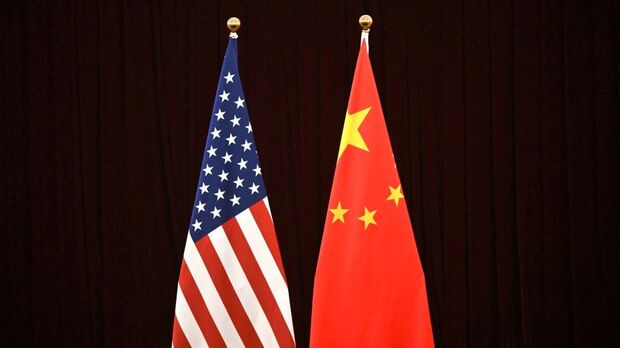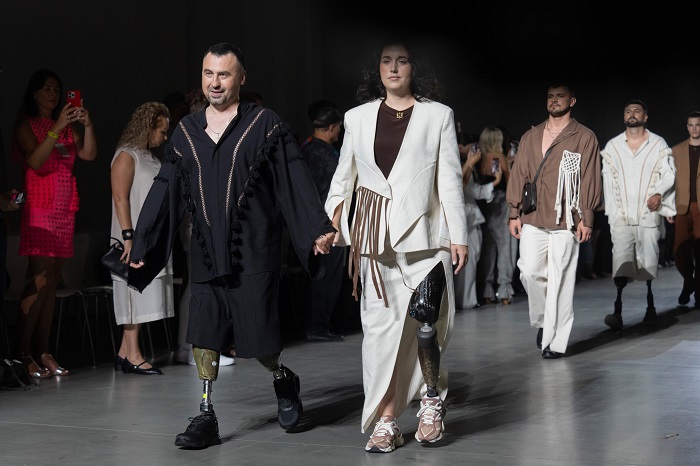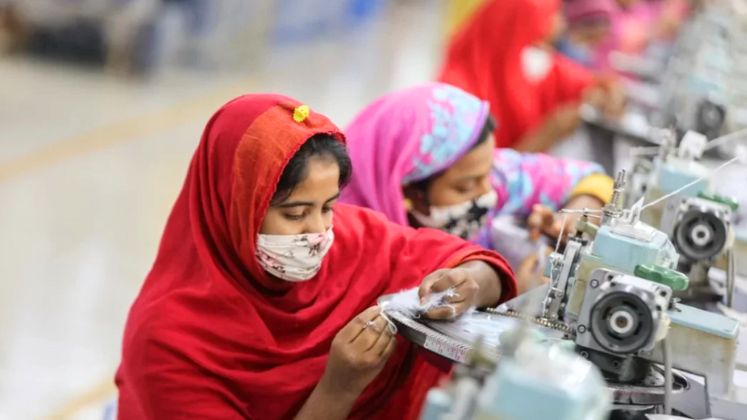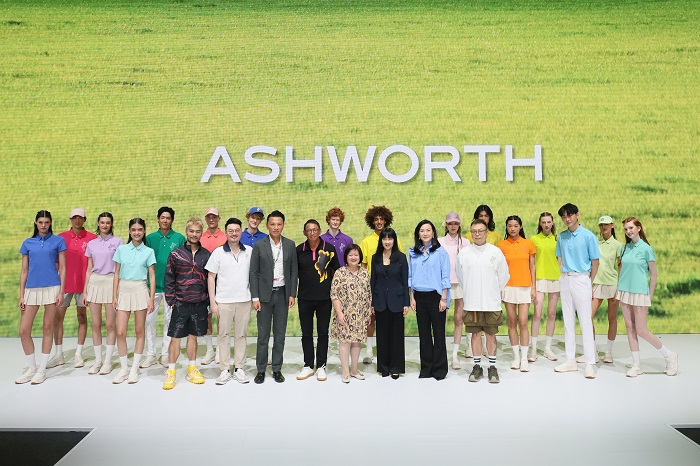FW
Vinatex has got permission to sell a combined 24 per cent stake to two domestic property firms, ahead of the state-run firm’s IPO this week.
Vinatex is Vietnam's largest apparel manufacturer and exporter. It will sell 10 per cent of the stake to Vingroup, the country’s third largest listed firm by market value, and 14 per cent to the unlisted Vietnam Investment Development Group.
Vinatex is dominating the Vietnamese textile sector and expects to gain strongly from trade pacts Vietnam is negotiating, including the 12-nation Trans-Pacific Partnership. The Trans-Pacific Partnership has been under negotiation for five years and would make Vietnamese garments more competitive than those of China, currently the biggest textile exporter to the US market. Vietnam is negotiating free trade agreements with the EU, South Korea and other countries.
Vinatex wants to raise registered capital to invest in yarn production, weaving and dyeing and stitching to reduce reliance on Chinese imports and qualify for the TPP’s yarn forward requirement concerning locally made materials.
The company projects a 28 per cent increase in net profit this year. However its profit margin could fall due to rising domestic competition as local firms boost production ahead of the TPP signing.
www.vinatex.com/
Exports of cotton from Egypt declined by 69.7 percent in the third quarter of the agricultural season 2013-2014.The drop in cotton exports is attributed to the decrease of cultivated area due to the preference of farmers to grow other crops which are more profitable.Usually the export market witnesses bulk buying from September to January.
Currently the largest importer of Egyptian cotton in the global market is India. Egypt produces medium-long staple long staple and extra-long staple cottons. These cottons produce a wide range of yarn counts needed for the production of fine textiles.In the 1960s and 1970s, Egypt supplied 80 per cent of the world market, but later lost market share to its US competitor, pima cotton.
Egypt’s white gold has seen many ups and downs. For over 30 years, the planting and processing of the crop was monopolized by the government. The government bought the cotton, ginned it and sold it to local producers or exported it. The government set the price paid to the farmer, the export price and the price at which it was sold to local spinners. In 1994, the rules changed with the new cotton sector liberalization law. Farmers were free to decide the crops they wanted to plant and private traders were allowed to buy the crop, gin it and either sell it to local spinners or export it.
The cotton growing area in China is expected to fall 9.4 per cent from the previous year.Due to rising cost and falling profitability of cotton growing and the government’s abolition of its temporary purchasing policy to hold up prices, the cotton growing area in the Yangtze River basin and the Yellow River basin has dropped by a relatively big margin.
Current Chinese cotton stocks are abnormally high, and to reduce these and return to normal levels, China would have to produce less, consume more, or reduce net imports or some combination.
China’s cotton stocks-to-use ratio surged to a record level of 180 percent in 2013-2014. As Chinese textile industry is recovering from its decline in 2013, the demand for cotton is expected to increase by half a million tons from the previous year to 8.5 million tons.
India, another major cotton exporter, is also expected to export only 5.7 million bales in 2014-2015, due to weaker global import demand. In the present scenario, it will be a daunting task for China to implement policies to reduce its cotton stocks, and hence the excess stocks are likely to remain for a while.
Cotton demand in China is expected to exceed its domestic supply by two million tons from September 2014 to August 2015.
Exports of apparel from India shot up by 17.9 per cent during April to August 2014. In the fiscal year 2013-2014, India’s apparel exports increased by 15.7 per cent year-on-year. In August 2014, India’s clothing exports rose 23 per cent compared to August 2013.
In January to July 2014 Indian apparel exports to the US increased by 5.62 per cent year-on-year. Except for Vietnam (13.85 per cent) and India (5.62 per cent), US garment imports saw decline from all major suppliers during the seven-month period over the corresponding period of last year.
During the first half of 2014, India’s clothing exports to the EU surged 16.33 per cent year-on-year. During the period, EU’s total apparel imports increased at 12.63 per cent year-on-year.
In June 2014, garments imports by EU registered an increase of 19.29 per cent compared to the same month of the previous year. During the month, EU registered positive growth in apparel imports from all four top suppliers, with the highest import growth being registered by Bangladesh (33.07 per cent), followed by India (27.17 per cent).
Apparel exports from India have been helped by strong demands in non-traditional markets like Latin America, west Asia, southern Africa and east Asia.
Textile maker Mount Vernon Mills has added to its portfolio of flame resistant denim fabrics with the launch of Phoenix TC denim. Phoenix TC denim is a tencel and cotton blend developed to enhance the softness and comfort of flame resistant jeans without a trade-off in durability.
Apparel manufacturer Bulwark is adopting this new technology for its denim jeans. Bulwark garments made with Phoenix TC denim are aimed at electric utility and oil and gas customers, providing solutions to some of the challenges being faced by safety professionals.
Tencel is a cellulosic fiber like cotton, yet it is the strongest cellulosic fiber available, and is used to make fabrics softer and more comfortable without sacrificing performance. Despite the added strength, denim made with tencel feels lighter than its true weight.
Mount Vernon Mills is based in the US. It makes flame resistant fabric. The mill produces a wide variety of denim including washed, over dyed, and stretch fabrics. Other products include twills, drills, duck and plain weave fabrics as well as piece dyed fabrics for career apparel, work clothing and sportswear.
Bulwark FR is an American company that manufactures and distributes flame-resistant protective apparel to the North American industrial market.
Exports of apparel from India shot up by 17.9 per cent during April to August 2014. In the fiscal year 2013-2014, India’s apparel exports increased by 15.7 per cent year-on-year. In August 2014, India’s clothing exports rose 23 per cent compared to August 2013.
In January to July 2014 Indian apparel exports to the US increased by 5.62 per cent year-on-year. Except for Vietnam (13.85 per cent) and India (5.62 per cent), US garment imports saw decline from all major suppliers during the seven-month period over the corresponding period of last year.
During the first half of 2014, India’s clothing exports to the EU surged 16.33 per cent year-on-year. During the period, EU’s total apparel imports increased at 12.63 per cent year-on-year.
In June 2014, garments imports by EU registered an increase of 19.29 per cent compared to the same month of the previous year. During the month, EU registered positive growth in apparel imports from all four top suppliers, with the highest import growth being registered by Bangladesh (33.07 per cent), followed by India (27.17 per cent).
Apparel exports from India have been helped by strong demands in non-traditional markets like Latin America, west Asia, southern Africa and east Asia.
The garment and footwear industry of Cambodia reported a 12.6 per cent rise in exports in the first seven months of 2014. The growth in the garment and footwear sector is low because some international buyers have reduced their purchase orders following wage protests earlier this year.
This industry is Cambodia’s largest income earner. Products are mainly exported to European countries and the United States. The sector comprises 960 factories with some 6,20,000 workers. It earned 5.5 billion dollars from exports last year, accounting for about 80 per cent of the country’s total exports.
Last week, trade union activists launched a campaign to demand a monthly minimum wage of 177 dollars in the garment and footwear sector from the current 100 dollars. Manufacturers favor the country for its low-wage costs, but strikes are frequent because of what union leaders say is widespread discontent with meager salaries, poor working conditions and lax enforcement of labor laws.
The campaign to seek a higher minimum wage is being supported by foreign trade unions. The campaign is targeting retail stores, offices, and workplaces of multinational apparel sellers. Unions say that for too long, international brands have reaped the benefits of poverty wages while claiming a commitment to living wages in their supply chains.
Over one-third of Bangladesh’s mills and factories are running below their production capacity. Production is hampered by political unrest and a crisis of gas, electricity and fuel. These units are having to temporarily layoff labor or keep them idle.
The total number of industrial units those are fully privately owned in the country is 44,231 at present, and this is 98.68 per cent of the entire number of industrial establishments.103 factories out of these are completely government-owned, other than that there are 263 foreign, 263 foreign-local joint ventures and 35 government-private joint investment factories.
The textile and food sectors are the main driving forces of the economy. About two-thirds of the country’s industries are in these sectors. Forty-two per cent of the production is in the textile sector. There are 17,967 factories in this sector. This includes 6,984 readymade garment factories. And there are a total of 8,441 food production factories.
The highest number of workers is employed in the garment industry. A total of two million 762 thousand workers are employed in 6,984 garment factories. Of these, 9.5 million are women. The textile industry employs the second largest number of workers. There are 8,00,000 workers employed in this sector. The food industry comes up third, employing 2,80,000 workers.
The textile and clothing industry from Botswana has formed a new industry group. It’s called the Botswana Textile and Clothing Association (BTCA). The aim is to fully utilise the duty-free incentives under the African Growth and Opportunity Act (AGOA).
BTCA anticipates AGOA will be renewed by the US Congress before it expires in 2015. The association, which was officially launched last month, is ready to help members with solutions to day-to-day challenges. It wants to promote growth and sustainability within the sector while increasing Botswana's regional and international textile and clothing market share.
The group will promote entrepreneurship in the industry as well as assist clothing businesses access finance from financial institutions. It will also work to enhance the capacity of the Botswana industry.
Botswana’s clothing and textile sector has failed to take full advantage of AGOA, struggling to make export sales to the competitive and demanding US market. While Botswana’s textile and garment industry has previously benefitted from trade preferences (also including the European Union), it has performed weakly during and after the global recession.
AGOA gives duty and quota free market access to the US for certain lines of goods from Botswana and 39 other African states.
Origin Africa will be held in Kenya from November 10 to 12, 2014. The concept around Origin Africa is to capture the spirit, style and innovation of modern Africa. This is an event dedicated to improving African cotton, textile and apparel trade. It aims to make Africa a source of cotton, textile and apparel products for domestic, regional and international buyers. Regional and international buyers of textile and apparel, mainly from US and EU brands, will also be attending.
The event is organized by Africa Cotton & Textile Industries Federation (ACTIF), a regional trade body formed in June 2005 by the cotton, textile and apparel sectors from across sub-Saharan Africa to create a unified and recognized voice in both regional and global trade affairs. Major textile and apparel producers from ACTIF member countries will exhibit at Origin Africa 2014.
Countries participating include: Kenya, Uganda, Tanzania, Ethiopia, Rwanda, Zimbabwe, Zambia, Mauritius, Cote d’Ivoire, India, Germany, US. Designers will exhibit their wares. A special section has been set up that will include home textiles, home décor, accessories, leather products and gifts.
For the first time, Origin Africa will have a cotton fiber section, where leading cotton fiber suppliers from at least 10 African countries have committed to participate. The objective is to develop linkages with spinners, technology suppliers, service providers and among cotton suppliers.












